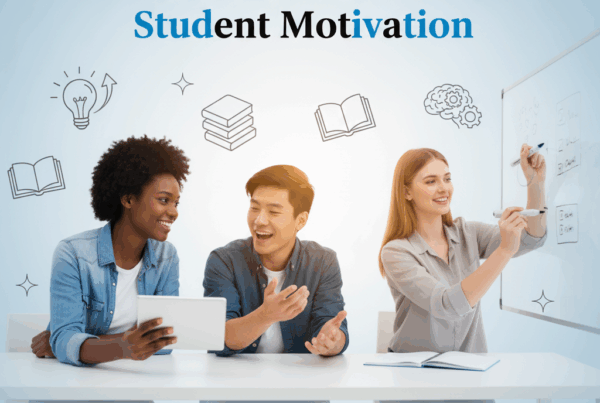Did you know that over 65% of students feel unmotivated in class at least once a week?
Sitting through lectures without engagement lowers grades and diminishes curiosity. Finding the best ways to motivate students goes beyond rewards—it’s about creating experiences that spark interest, curiosity, and sustained learning.
In this guide, we explore 10 effective ways to motivate students in the classroom, backed by research and actionable strategies that help teachers boost participation and academic performance.
Gamify Learning to Spark Engagement
Gamification is one of the most effective ways to motivate students. Research shows students who participate in game-based learning score up to 14% higher on assessments.
Actionable Tip: Implement point systems, quizzes, or challenges. Tools like Kahoot and Quizizz make lessons interactive and fun.
Connect Lessons to Real-Life Scenarios
Students often disengage when lessons feel irrelevant. Incorporating real-world applications is one of the most impactful ways to motivate students, improving engagement and retention by over 30%.
Actionable Tip: Assign projects or case studies tied to real-life challenges and scenarios.
Give Students Choice and Autonomy
Autonomy fosters intrinsic motivation. Studies show giving students options is a proven way to motivate students, increasing engagement by 20–25%.
Actionable Tip: Allow students to select project topics, presentation formats, or research areas.
Use Visuals and Interactive Media
Interactive visuals help students retain up to 42% more information. Using creative media is another effective way to motivate students and make lessons memorable.
Actionable Tip: Include videos, infographics, or interactive simulations, and encourage group discussions.
Set Clear Goals and Celebrate Milestones
Setting clear objectives motivates students to strive for success. Celebrating achievements is a practical way to motivate students, boosting confidence and effort.
Actionable Tip: Break projects into small milestones and acknowledge progress with praise or certificates.
Encourage Peer Collaboration
Learning alongside peers enhances social engagement and accountability. Peer collaboration is a powerful way to motivate students, improving performance by up to 20%.
Actionable Tip: Use group projects, peer teaching, and collaborative problem-solving exercises.
Integrate Technology Purposefully
Educational technology is a dynamic tool for engagement. Using technology thoughtfully is a proven way to motivate students, raising participation rates by 35%.
Actionable Tip: Incorporate interactive apps, online quizzes, or virtual labs to keep students engaged.
Provide Constructive Feedback
Timely feedback helps students understand their progress. Offering feedback consistently is an essential way to motivate students, improving learning outcomes by 25%.
Actionable Tip: Use written or verbal feedback, one-on-one check-ins, and digital tools to guide improvement.
Foster a Positive Classroom Environment
A safe and supportive environment increases student engagement. Creating a positive culture is a critical way to motivate students, reducing disengagement by 30%.
Actionable Tip: Recognize effort, encourage questions, and celebrate diversity in contributions.
Relate Lessons to Students’ Interests
Students are most motivated when lessons align with their passions. Connecting learning to interests is a creative way to motivate students, increasing participation and enthusiasm.
Actionable Tip: Survey students’ hobbies and incorporate relevant examples, projects, or discussion topics.
Frequently Asked Questions (FAQs)
What are quick ways to motivate disengaged students?
Use interactive activities, achievable goals, and personalized feedback as immediate motivators.
How can gamification work for all ages?
Adapt the complexity and theme of activities to match students’ age and interests.
Can technology alone motivate students?
Technology is most effective when combined with interactive teaching and emotional support.
How often should motivational strategies be changed?
Rotate approaches regularly to maintain novelty and engagement.
Does peer collaboration improve motivation?
Yes, peer learning fosters accountability, participation, and better outcomes.
How does emotional support affect motivation?
It boosts confidence, resilience, and willingness to engage, directly increasing motivation.
Are these strategies measurable?
Yes, research shows 20–42% improvement in engagement, participation, and academic performance.
Conclusion: Motivation is Multifaceted
Implementing diverse ways to student motivate transforms classrooms into dynamic, engaging learning spaces.
By applying these strategies, educators can foster curiosity, improve participation, and help students achieve their full potential. Motivation is not a one-time event; it’s a continuous effort that shapes lifelong learners.



